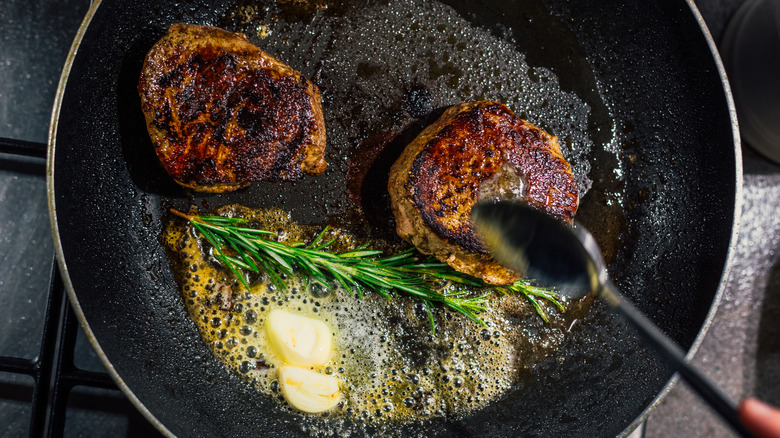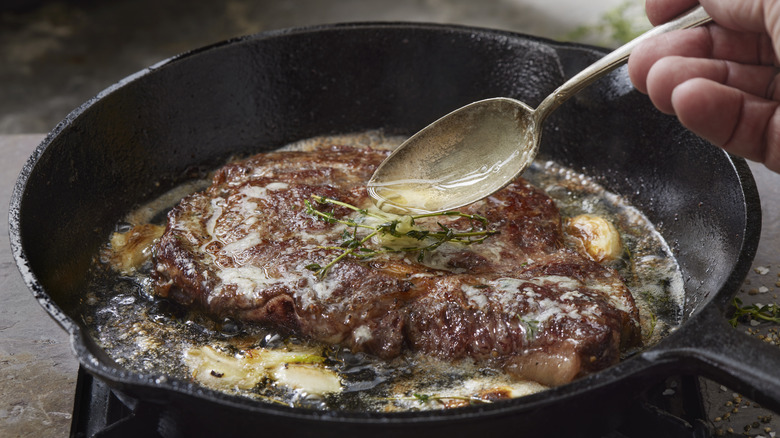How Fat Flashing Makes For An Even Better Steak
No matter how easy or difficult your cut of meat is, a juicy, flavorful steak is always the goal. One of the many techniques for making the perfect steak is fat flashing because it yields both a crusty outside and a tender inside.
Matthew Kreider, executive chef at Steak 954, a steakhouse in Fort Lauderdale, Florida, knows a thing or two about the benefits of fat flashing a steak and has kindly shared his expertise with The Takeout. For the less carnivorous but still curious readers, fat flashing is when you take the leftover oil or grease in a pan that was used to cook the steak and pour it over the finished steak just before serving it.
"Flashing a steak after it rests is a really professional step in the cooking process," says Kreider. The 'flashing' part of fat flashing is often done with steaks in restaurants, but the fat incorporation is a best of both worlds sort of strategy. When chefs allow a steak to rest, it can unfortunately cause a decline in the crust's quality; but fat flashing fixes that. So, keep your pan hot and ready because after just a few minutes of rest, you're going to want to give your steak a quick grease bath of rejuvenation.
The benefits of fat flashing your steak
Usually when making a steak, chefs will sear the outside or 'flash' the mat by placing it in an oven with the heat cranked up. Unlike many steak myths you thought were true, this does in fact crisp up the crust of the meat just before serving. Flashing "allows you to have a well-rested steak, and have it be hot and crisp on the outside," says Kreider. "You can use your broiler, grill, or a quick baste in a pan with hot fat."
As Kreider mentioned, steaks are rested to ensure they're tender inside and then flashed to get the outside sizzling. Fat flashing helps with all of this but adds a bonus jolt of flavor to the steak. Just imagine the fat and oil the steak was originally cooked in dripping down its sides and sizzling over its top. Plus, fat flashing allows you to add other ingredients into the mix. "If you basted a steak in flavored oil or butter, pouring it over a steak is delicious," noted Kreider. "You can add whatever you want to the fats to personalize it and make it delicious. Fresh herbs, garlic, and spices can all be great additions."
Fat flashing not only adds flavor, crispness, and juiciness but it also helps stop you from overcooking the steak if you were to simply flash it in an oven. You may not be a professional in your home kitchen, but fat flashing will help you serve restaurant level steaks as if you are.

